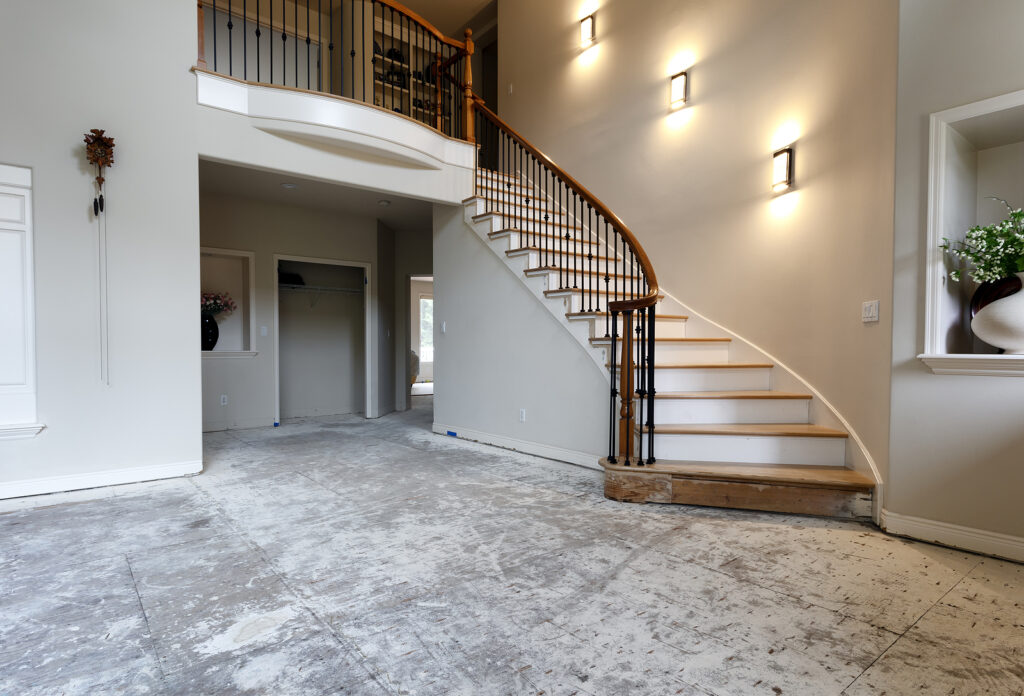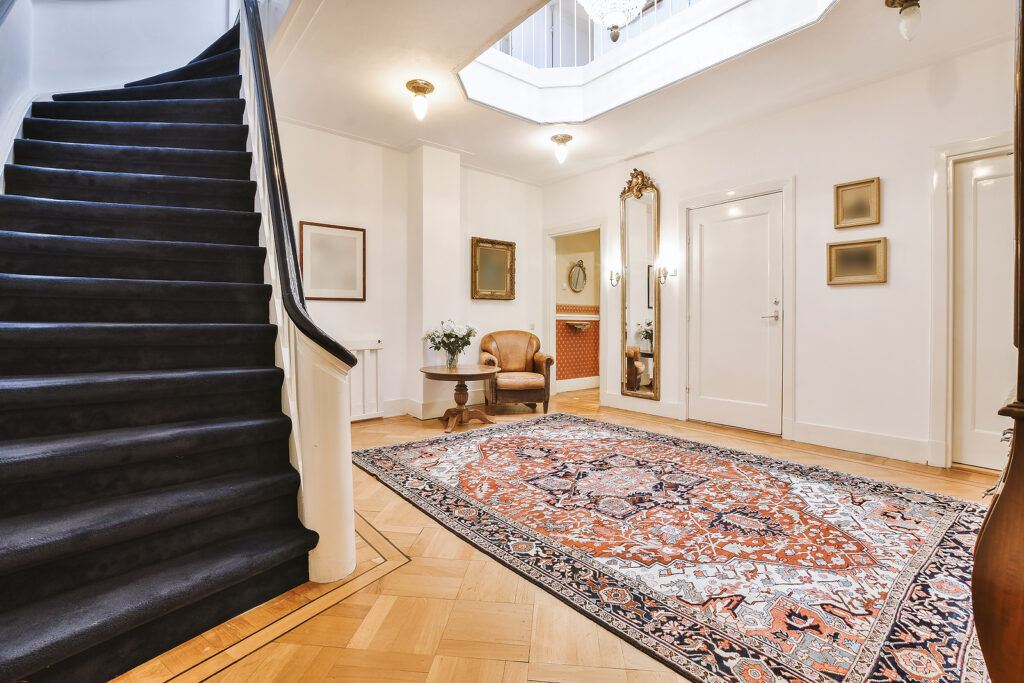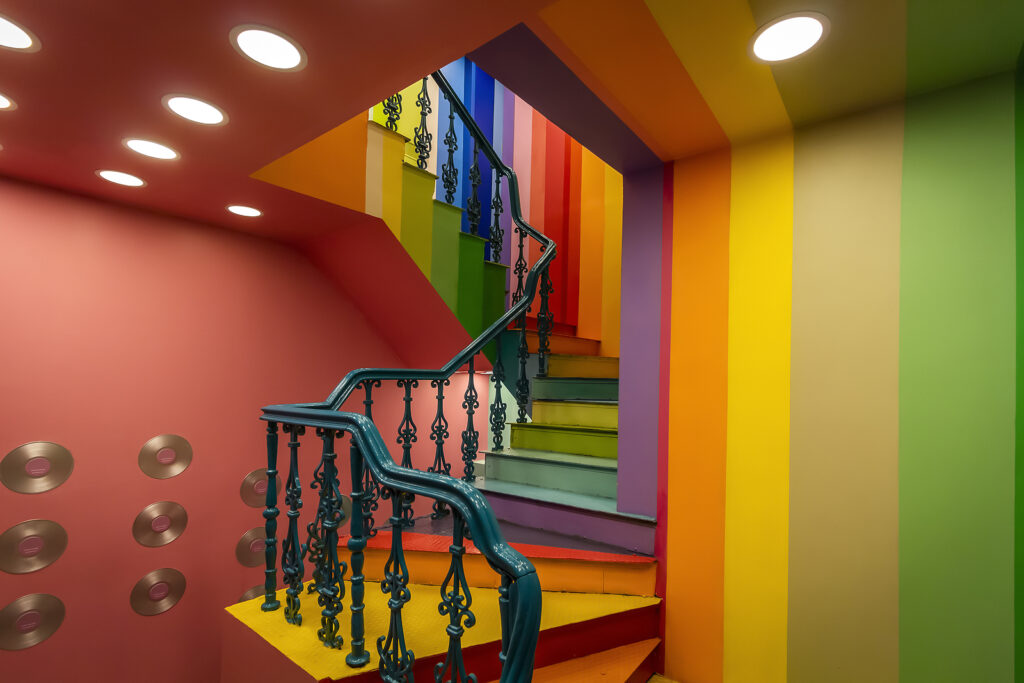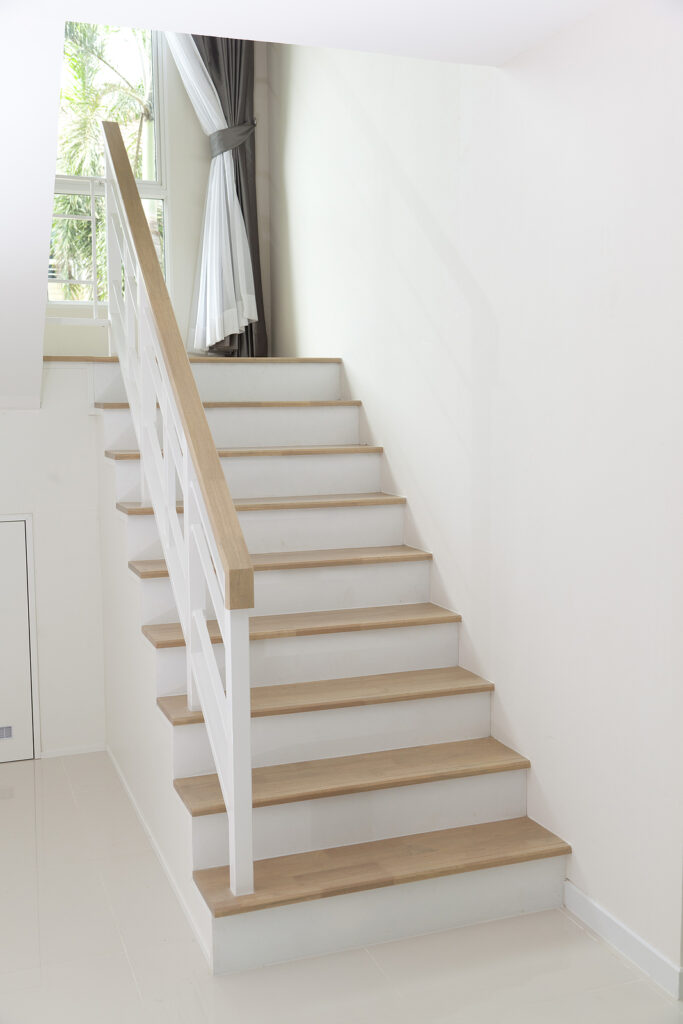Timeless Ideas for Painting Stair Bannisters – Bring Your Vision to Life

When it comes to painting stair bannisters, there are a few things to consider before you put paint to the bannister. You will need to take into account the existing interior design of both your home and your staircase before painting. Your staircase is the focal point of your home, so you want to make sure it either matches with the hallway decor or provides a bold and brave contrast.
These two factors are important to consider before any paint is bought.
Below, we have provided a basic ideas guide for painting stair bannisters. These ideas are predominantly for domestic properties but can be transferred into commercial spaces.
What Paint Should You Use?

We have a dedicated article on what the best paint is for painting staircases and railings, as well as how to professionally paint your own staircase.
When it comes to painting your on stair bannisters, it’s important to ensure you buy and use the correct paint. While there is no “best type of paint”, there are certain paints that are more appropriate with regards to withstanding the traffic bannisters will face. Try to stay away from matte paints, as these are more prone to blemishes and won’t be able to withstand nearly as much traffic and wear and tear in comparison to gloss and satin (both oil-based).
When it comes to painting your bannister, here’s a quick 7-step guide.
- Clear the area and give yourself space to paint. The worst thing you can do is begin painting without covering any surfaces you don’t want to accidentally splatter with paint.
- Look out for any protruding nails or screws and unscrew them using a hammer or appropriate tool. If they don’t come off, simply hammer them into the bannister and sand them down until they are flush (until they are smooth).
- If your staircase has already been painted but you’re looking to paint over it, you will need to strip the paint back by lightly sanding it. This is particularly important if you are planning to paint over varnish. Sanding and then wiping it clean with sugar soap will help the paint to stick. If the previous paint is in seriously bad condition, you may need to use a paint stripper to remove it.
- Once the paint has been sanded or stripped, vacuum the area and wash it with a damp cloth. Wash the bannister with sugar soap if possible as this will help the new paint to stick.
- Next, priming. Invest in a good primer because it will help the paint to stick (as well as the sugar soap) and it will also help enhance the paint’s durability. We’d opt for a wood primer and undercoat if your bannister is made from wood.
- Once you have applied your primer and left it to dry, you are now ready to apply your first coat. Be sure to start at the top of the staircase and work your way down, otherwise you’ll be stuck up there. The first coat should take around eight hours to properly dry, so wait this long before applying the second coat. We’d recommend 3/4 coats of paint for a sleek and professional-looking finish. Remember, your staircase is going to see constant foot traffic every day.
- Once dry, you can then attach our stunning stair runners and bars to complete your staircase design!
Some Timeless Ideas for Painting Stair Bannisters

Coastal Staircases
If your hallway adopts a nautical interior design scheme (lots of blues, whites and woods), then your staircase should follow suit. There are no rules per se when it comes to what colour your staircase and bannisters should be in relation to each other.
For example, if your staircase treads and risers are all white, your bannister can be too. Alternatively, you can opt for white treads and oak risers with a white bannister. Stick to the colours of blue, white and oak to keep the nautical theme going.

The Classic Black and White
A fan favourite and simple go-to for any modern home. Black and white staircases will always exude class and boldness in modern homes. A white staircase with a black bannister offers a sleek, smart and bold contrast when coupled together. Partner this with a predominantly white hallway design with some accent colours (woods and dark greens work well) for a powerful, timeless design.

Multicoloured Bannisters
This one is definitely for the brave. You could try painting each spindle of your bannister a different colour of the rainbow. This will require a number of different colours (seven to be exact), so be sure to buy the right colours and the right amount. This bannister idea would be great leading up to a child’s bedroom or play area.

Natural Wood Bannisters
If you’re looking to restore your old wooden bannister, we think that’s a great idea. Of course, the aesthetics and success of your restoration project will depend on the condition of your bannister. You will need to use a paint that is able to withstand heavy amounts of traffic, such as hard-enamel paint in a satin or semi-gloss finish.
Complement Your Bannisters With Stunning Stair Runners
Now that you know the best way to paint your bannisters, why not complete your staircase design with a stunning floor runner and matching bars? Not only do our stair runners protect your stairs but they come in a variety of styles and colours to suit your stair colour and your hallway’s interior design.
Explore our wide range of runners and beautiful bars and rods to complete your staircase design.


